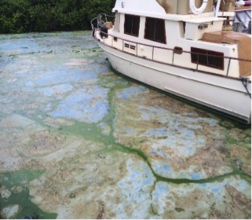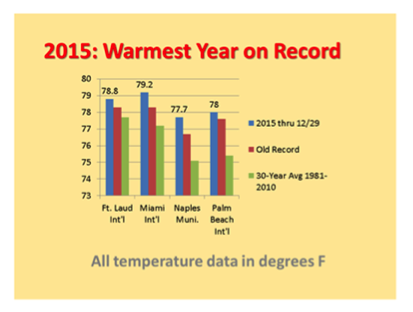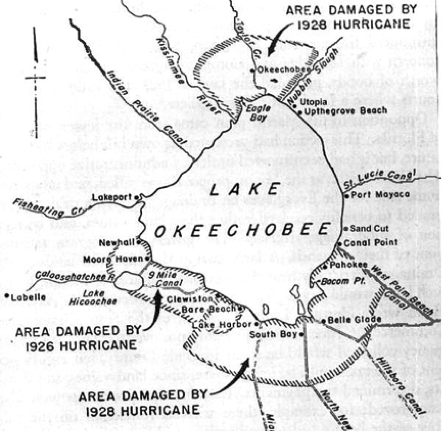 Blog post by: Hilary Kordecki, Sea Turtle Intern Although not specifically about our beloved Caretta caretta, this post will hopefully give you the scoop on Florida’s algae blooms. Within all ecosystems, there is a fine balance of nutrients that nourishes the animals and plants. When that balance is disrupted, unintended consequences arise. Such is the case in Florida where reports within the last week have indicated that algae blooms are in full swing, most likely due to the combined introduction of excess nutrients and warmer temperatures. Fun fact: These thick, algal blooms are actually from bacteria known as cyanobacteria, not algae. These cyanobacteria have chlorophyll a and produce oxygen making them look like blue green algae (hence their name). Access to plentiful nutrients cause the cyanobacteria colonies to reproduce uncontrollably which also speeds up cell death. The breakdown or lysis is what produces toxic byproducts known as cyanotoxins which are responsible for making algal blooms harmful to both us and the marine creatures. These cyanotoxins can be irritable and even fatal (depending upon concentration) to GI tracts, livers, nervous systems, and skin. Furthermore, they do not discriminate between us and marine life like our beloved sea turtles. Taste and drinkability of water supplies is also compromised. Moreover, the thick accumulations of these blooms that sit on the water’s surface decay and remove oxygen from the water around it. So nearby fish, shellfish, invertebrates, and plants die from hypoxia, or a lack of oxygen in the water. On a microscopic level the cyanobacteria also disrupt the delicate phytoplankton. Deaths among the food web ultimately impact the whole ecosystem including us as we enjoy our seafood dinners. So how did such large numbers of cyanobacteria (which generally bloom more in fresh water) end up in the ocean? Two factors created the perfect stew for the algae blooms to propagate: warmer temperatures and agricultural runoff from Lake Okeechobee. According to the NOAA weather records, 2015 was the warmest year on record for southern Florida. Additionally, water from Lake Okeechobee was control-released so as to avoid overflowing the thirty-foot tall dike, especially with hurricane season just around the corner. Currently there are about 2.2 billion gallons of water being control-released between the east and west locks and into canals like St. Lucie and West Palm Beach (which are where we are seeing the effects). The problem with all of the lake water mixing into the oceans is that it is a stew of agricultural fertilizers and pesticides rich in nutrients like nitrogen and phosphorus which are just the perfect growing feed for cyanobacteria.
Where I’m going with all of this is that everything is interconnected. It’s incredible how fragile, yet durable, our ecosystem is and in time balance will be restored. But this is where education can step in – now that you and I understand why the algae blooms are propagating, we can work to minimize future blooms. Turtle on! -Hilary References: http://www.srh.noaa.gov/images/mfl/news/2015WeatherSummary.pdf http://oceanservice.noaa.gov/facts/why_habs.html https://www.epa.gov/nutrient-policy-data/health-and-ecological-effects
0 Comments
Leave a Reply. |
Leah SchwartzentruberSea Turtle Biologist Archives
June 2024
|


 RSS Feed
RSS Feed